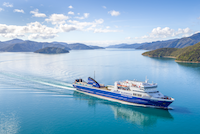General New Zealand Statistics
New Zealand Population
Resident population of New Zealand:
Main Urban Area
Auckland
Hamilton
Napier / Hastings
Wellington
Christchurch
Dunedin
Remaining main urban areas
Total, 16 main urban areas
Remaining areas
Total resident population
1,413,700
218,800
128,800
393,600
375,200
116,200
605,100
3,251,400
1,219,600
4,471,000
New Zealand Households
New Zealand has about 1.55 million private households. While 36% are families with children, 25% are couple-only households and 24% are single-person households. New Zealand's median age has slowly increased and single-person households have become more common.


New Zealand Education
Formal education normally begins at age five, though many children enjoy subsidised pre-school education. The schooling system is divided into primary, secondary and tertiary sectors.
New Zealand Tourism
New Zealand lies around 1,600 kilometres from Australia's eastern coast (a three and a half hour flight) and 9,000 to 12,000 kilometres from all Pacific Rim destinations (10 to 16 hours' flight). Auckland has the busiest of the several airports servicing international travellers. Peak travel months are December to February.
New Zealand Justice
New Zealand has an independent judiciary headed by the five-member Supreme Court. There are about 270 judges in New Zealand. Commercial law is increasingly compatible with Australian law.
New Zealand Exports
Principal exports are dairy products, meat, forest products, machinery, fruit and fish. Food processing is the largest manufacturing industry and there are a variety of small, light manufacturingindustries. New Zealand produces coal, oil and natural gas and various metallic and non-metallic minerals. The most renowned non-metallic mineral is pounamu/greenstone, used in jewellery.
International Travel to New Zealand
New Zealand's top 10 visitor source countries are Australia, China, United States of America, United Kingdom, Japan, Germany, Republic of Korea, Canada, Singapore and India.
New Zealand Energy
New Zealand industry uses energy from a range of sources. Electricity is based on hydroelectric generation supplemented by thermal and geothermal powerplants. There are no nuclear power plants in New Zealand.
The country faces declining hydrocarbon resources. With growing industrial, commercial and domestic demand for energy of all types, alternative energy sources are returning to public interest.
Short-term Visitor Arrivals and NZ Resident Short-term Departure
Arrivals (million)
2.7
Departures
2.2
Top Five Visitor Source Countries
Country of last permanent residence
Australia
China
United States of America
United Kingdom
Japan
Visitors
1,350,032
231,120
196,880
190,816
75,052
Merchandise Trade Exports - Top 10 Destinations
In million $.
Country
People's Republic of China
Australia
United States of America
Japan
Republic of Korea
United Kingdom
Singapore
Malaysia
Indonesia
Taiwan
Value
9,965
9,125
4,071
2,829
1,633
1,397
1,021
911
886
883
Exports of Main Commodities
In million $.
Commodity
Milk powder, butter and cheese
Meat and edible offal
Logs, wood and wood articles
Crude oil
Mechanical machinery and equipment
Beverages
Fruits and nuts
Fish
Aluminoids, starches and glues
Electrical machinery and equipment
Cereal preparations
Value
13,590
5,276
3,858
1,727
1,527
1,491
1,483
1,327
1,253
782
740
Exports of Services
In million $.
Service
Transportation
Travel
Communications services
Computer and information services
Royalties and licence fees
Other services
Total services
Value
2,234
6,972
296
170
159
948
11,057
View more key facts and information about New Zealand.













